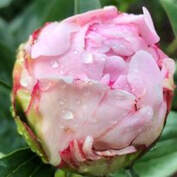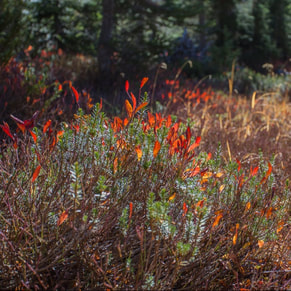Lashanna’s story illustrates the dimensions of community deathcare, from education and advocacy to guidance and financial support.

In my work as a death doula, I have the honor of caring for the dying and teaching others how to care for dying people that they hold dear. As a practitioner committed to community wellness, I’ve joined with other volunteers and to create support for community-led deathcare.
It took only a few generations for the majority of us in modern western America to lose community care for the dying and the dead to capitalism. Community deathcare is still practiced in cultures where younger people take care of older family members.
With the aim of enabling a more honest relationship with dying, a community care model is re-emerging in the greater Seattle area and in other communities around the country. Based on the fundamental rights of the living, the dead, and the people they choose to care for them in death, the care takes forms as different as our family constellations, our access to information, our favorite colors, our ability to pay, or the music genres we prefer.
To illustrate what community-led deathcare can look like, here are two stories.
One woman had the privilege of dying in the home where she lived with her daughter, son-in-law, three dogs, and a cat. The family shared with me that no one in their family had had a nice death. They had experienced chaos and anger, sad and mad relatives, miscommunication, and disorganization. No one wanted to repeat this strife again. They wanted to create a plan that supported them as a family to enact their desires around the anticipated death to the best of their abilities.
As a result, the dying woman’s last days were full of family, faith leaders, music, and support. She was kept comfortable, warm, and clean. She was surrounded by familiar faces, smells, sounds, and sights, making her transition to death less confusing and more comfortable than if she had been in an unfamiliar place. She knew that her body was going to stay in the house for a few days after her death, to be cared for by her family and with the guidance of her doula. She knew the clothes she was going to wear, the music that would surround her, the decorations that would be displayed, and how her body would leave the house on its way to aqua-cremation.
All of the planning led to an understanding between the dying woman and her family that created a sense of calm, rather than urgency, a soft comfort as death approached, and then after. Through having community access to education about their options, this family was able to engage with death in a way that they had not experienced before.
Community deathcare is an especially important lifeline for those who don't have a wide social circle or the financial means to pay for after-death care. For example, in the case of a violent and traumatic death, the family didn't know how to get their brother from the medical examiner, or how to pay for any of the required services and disposition. Custody laws in Washington gave rights to next-of-kin, which happened to be someone who was in a mental health crisis. Navigating all of this was new to them, but the family knew that they had someone to help them with next steps and to help them figure out the answers to the questions that came up.
We worked with a home-funeral-friendly funeral home to ensure that the legal documents were all processed. A Sacred Passing's Community Deathcare Fund was able to pay for direct cremation, and local neighbors donated the funding needed to reserve a viewing space at the crematorium. With herbs from my garden, music, handwritten notes, and a simple linen shroud, we honored the dead. Those who loved him were all present, tucking notes in the shroud, placing flowers in the crook of an arm, singing songs, and telling stories that brought laughter and tears. Then the family witnessed the cremation, and they left knowing that they had walked with their loved one to the end. Later the cremains were apportioned so that each family group could have some, to honor and pay further tribute in their own ways. Community deathcare, in this case, involved education, advocacy, guidance, and financial support.
To create a context where information about options and support for community-led deathcare is accessible, community deathcare can also look like hosting a Death Café, where people come to talk about their experiences with death. Community deathcare can look like leading an advanced-directive workshop at the senior center or the local food bank. Community deathcare can look like being a health advocate for systematically marginalized people who need dependable support. Educating yourself on the laws of your state, and sharing what you learn with everyone you can, is an amazing place to start.
It took only a few generations for the majority of us in modern western America to lose community care for the dying and the dead to capitalism. Community deathcare is still practiced in cultures where younger people take care of older family members.
With the aim of enabling a more honest relationship with dying, a community care model is re-emerging in the greater Seattle area and in other communities around the country. Based on the fundamental rights of the living, the dead, and the people they choose to care for them in death, the care takes forms as different as our family constellations, our access to information, our favorite colors, our ability to pay, or the music genres we prefer.
To illustrate what community-led deathcare can look like, here are two stories.
One woman had the privilege of dying in the home where she lived with her daughter, son-in-law, three dogs, and a cat. The family shared with me that no one in their family had had a nice death. They had experienced chaos and anger, sad and mad relatives, miscommunication, and disorganization. No one wanted to repeat this strife again. They wanted to create a plan that supported them as a family to enact their desires around the anticipated death to the best of their abilities.
As a result, the dying woman’s last days were full of family, faith leaders, music, and support. She was kept comfortable, warm, and clean. She was surrounded by familiar faces, smells, sounds, and sights, making her transition to death less confusing and more comfortable than if she had been in an unfamiliar place. She knew that her body was going to stay in the house for a few days after her death, to be cared for by her family and with the guidance of her doula. She knew the clothes she was going to wear, the music that would surround her, the decorations that would be displayed, and how her body would leave the house on its way to aqua-cremation.
All of the planning led to an understanding between the dying woman and her family that created a sense of calm, rather than urgency, a soft comfort as death approached, and then after. Through having community access to education about their options, this family was able to engage with death in a way that they had not experienced before.
Community deathcare is an especially important lifeline for those who don't have a wide social circle or the financial means to pay for after-death care. For example, in the case of a violent and traumatic death, the family didn't know how to get their brother from the medical examiner, or how to pay for any of the required services and disposition. Custody laws in Washington gave rights to next-of-kin, which happened to be someone who was in a mental health crisis. Navigating all of this was new to them, but the family knew that they had someone to help them with next steps and to help them figure out the answers to the questions that came up.
We worked with a home-funeral-friendly funeral home to ensure that the legal documents were all processed. A Sacred Passing's Community Deathcare Fund was able to pay for direct cremation, and local neighbors donated the funding needed to reserve a viewing space at the crematorium. With herbs from my garden, music, handwritten notes, and a simple linen shroud, we honored the dead. Those who loved him were all present, tucking notes in the shroud, placing flowers in the crook of an arm, singing songs, and telling stories that brought laughter and tears. Then the family witnessed the cremation, and they left knowing that they had walked with their loved one to the end. Later the cremains were apportioned so that each family group could have some, to honor and pay further tribute in their own ways. Community deathcare, in this case, involved education, advocacy, guidance, and financial support.
To create a context where information about options and support for community-led deathcare is accessible, community deathcare can also look like hosting a Death Café, where people come to talk about their experiences with death. Community deathcare can look like leading an advanced-directive workshop at the senior center or the local food bank. Community deathcare can look like being a health advocate for systematically marginalized people who need dependable support. Educating yourself on the laws of your state, and sharing what you learn with everyone you can, is an amazing place to start.
Lashanna is a Director of A Sacred Passing: Death Midwifery & Community Education and member of the Pearl Collective; community-led deathcare is the core of A Sacred Passing’s education model and Pearl Collective’s practices.
Read more stories...
Read more stories...
Learn How To: |
Learn About: |
Washington Funeral Resources
and Education [email protected] Contact Landscape photos courtesy of Sean Proll Justin Craig All Rights Reserved |
Washington Funeral Resources and Education is a non-commercial public interest site dedicated to helping Washington consumers care for their own dead with or without the assistance of a funeral director. See FuneralPartnership.org for more state funeral information. This site is maintained as a project of White Eagle Memorial Preserve and Sacred Earth Foundation, which coordinates responses to inquiries with other Washington-based organizations and practitioners that support the mission of the Funeral Partnership.
Disclaimer:
This website has been created by volunteers making reasonable efforts to provide resources and materials for informational purposes only. Any information you obtain from this website is not legal advice and should not be relied upon without confirmation of current law. No warranties, expressed or implied, are made with respect to the information herein. There is no guarantee that the information contained here is complete or up-to-date as of the date that you view this site. The agencies linked via hyperlinks are responsible for the content of those sites. Their information is subject to change and should be consulted directly to ensure accurate and up-to-date information. Please report any inaccuracies to us in the form on the CONTACT page. Thank you!
This website has been created by volunteers making reasonable efforts to provide resources and materials for informational purposes only. Any information you obtain from this website is not legal advice and should not be relied upon without confirmation of current law. No warranties, expressed or implied, are made with respect to the information herein. There is no guarantee that the information contained here is complete or up-to-date as of the date that you view this site. The agencies linked via hyperlinks are responsible for the content of those sites. Their information is subject to change and should be consulted directly to ensure accurate and up-to-date information. Please report any inaccuracies to us in the form on the CONTACT page. Thank you!

